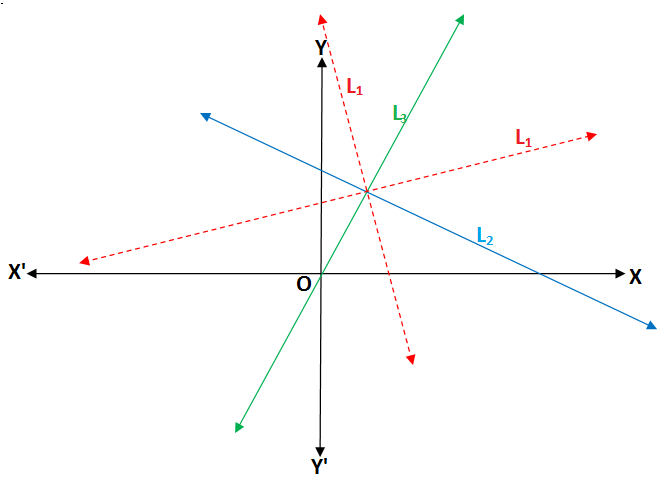If the straight lines ax + by + c = 0 and x cos(alpha) + y sin(alpha) = c enclose an angle pi/4 between them and meet the straight line x sin(alpha) - y cos(alpha) = 0 in the same point between them, then?
A) a^2 + b^2 = c^2
B) a^2 + b^2 = 2
C) a^2 + b^2 = 2c^2
D) a^2 + b^2 = 4
A)
B)
C)
D)
3 Answers
Explanation:
From the lines
we have
but from
the intersection point gives us
and after substituting into
then

Given lines are
As per given condition above three given lines pass through a fixed point.
Hence
Now equations of the angle bisectors between
Bisector -1
Bisector 2
Comparing
So
Comparing
So
B)
Explanation:
An alternative quick and dirty method to decide which of the given options is correct is to consider a particular example...
Let
Then the third straight line is:
xsqrt(2)/2-ysqrt(2)/2 = 0
which simplifies to
The second straight line is:
xsqrt(2)/2+ysqrt(2)/2 = 3sqrt(2)
which simplifies to
These intersect at
The first straight line passes through this intersection point and is horizontal or vertical. That is:
0x-sqrt(2)y+3sqrt(2) = 0
or:
-sqrt(2)x+0y+3sqrt(2) = 0
In either case



